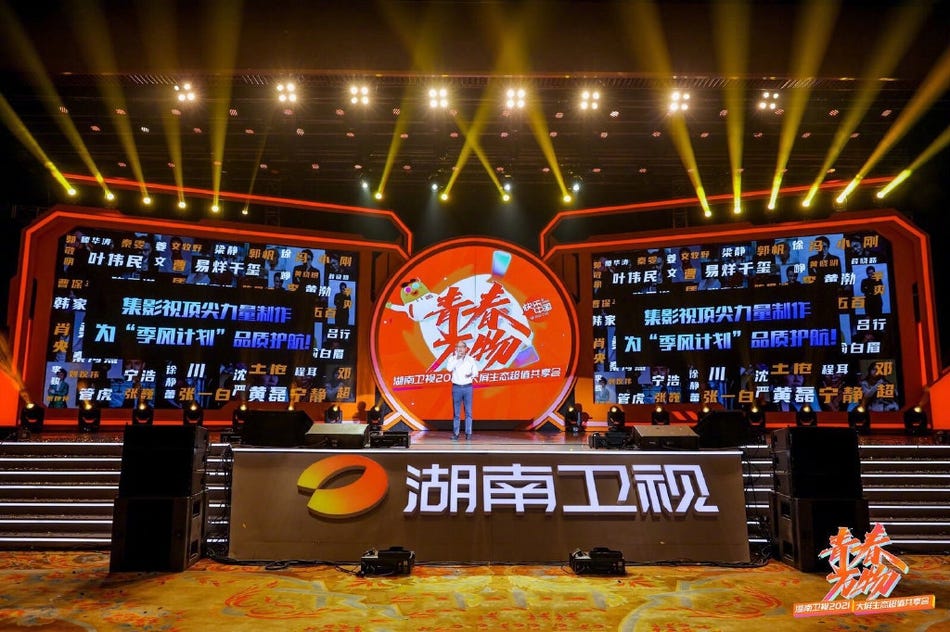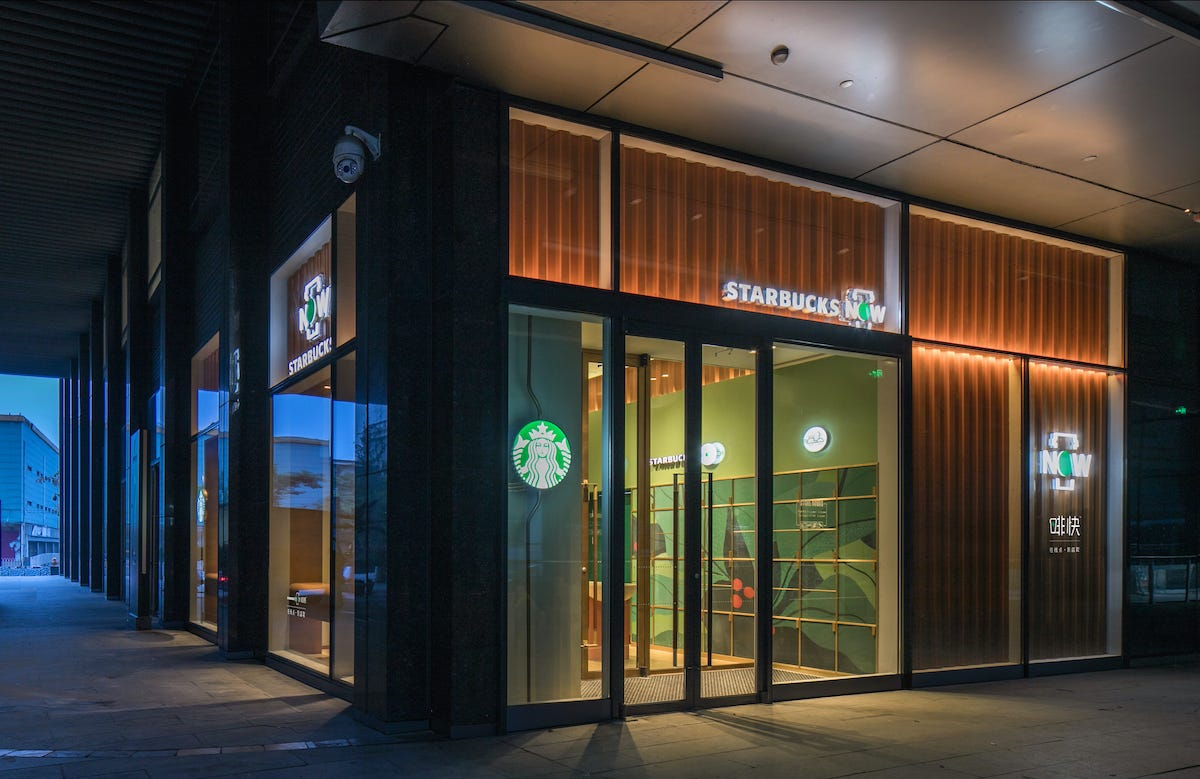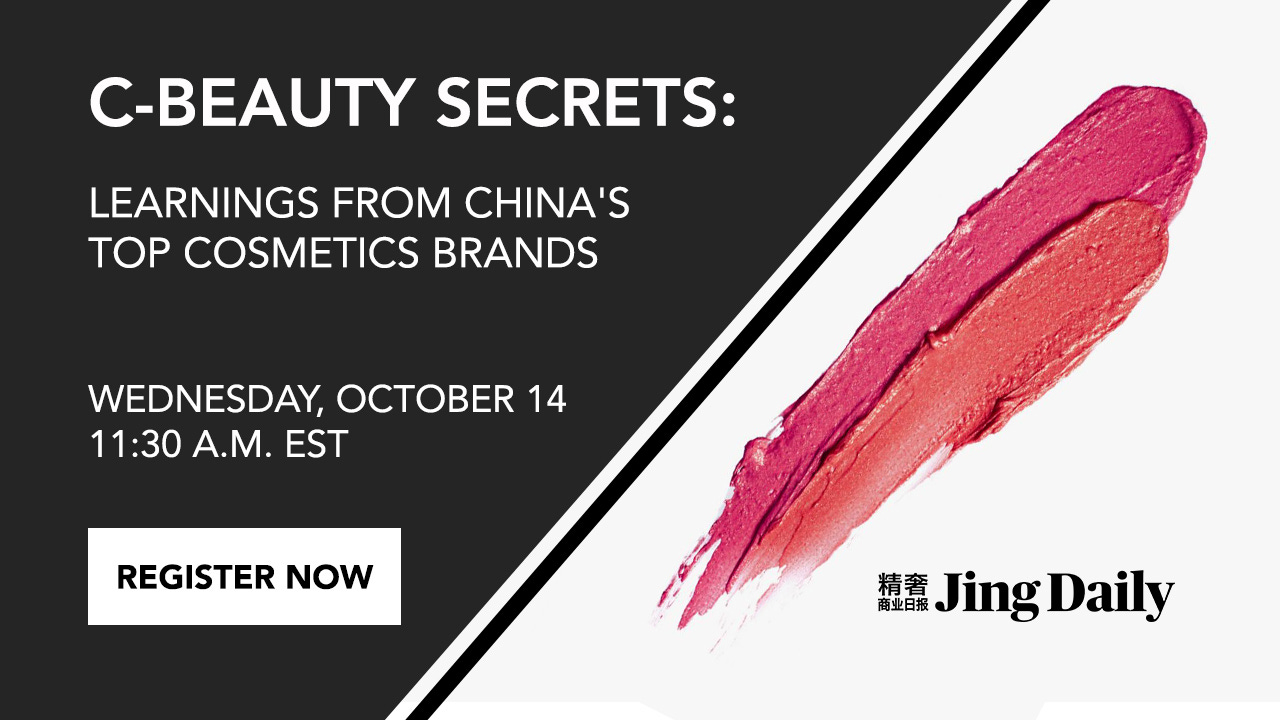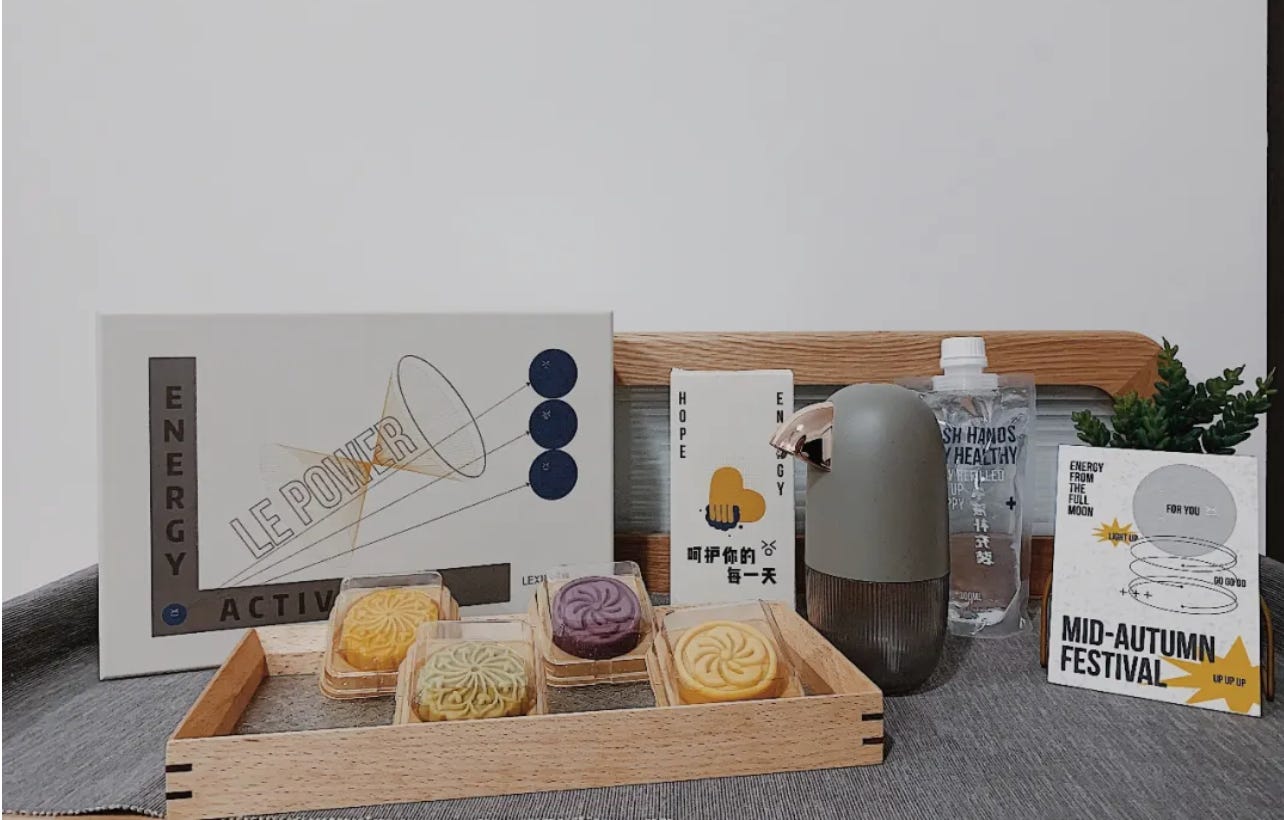How Chinese Tech Builds Trust, Part VI: The Content Trends That Are Growing Bilibili's Audience
Plus: What "new retail" means for brands, Mid-Autumn Festival trends, and a strong (digital) consumer recovery.
The Content Commerce Insider newsletter is published twice weekly and focuses on how brands create content to drive revenue. If you have received our newsletter from a friend or colleague, we hope you will subscribe as well and follow us on LinkedIn.

For most brands, short-form videos have been tough to execute, to say the least. They're a great fit for those that can get their point across in a poignant, humorous, and visual way. But that’s not too many brands.
Bilibili is young China in a nutshell. The platform's average monthly paid users skyrocketed from 3 million in mid-2018 to 12.9 million by June 2020.
Some 80% of Bilibili’s users are young Chinese under the age of 25. More than 60% have a university degree and over half are based in first- and second-tier cities. The platform has been leveraging two big Chinese trends to fuel growth. For brands looking to diversify ad placements away from display ads — knowing full well that branded content is 22 times more engaging than display ads — Bilibili offers an opportunity.
Trend one: Increased willingness to pay for digital content
China's paid digital content market is expected to grow from $700 million in 2016 to $3.45 billion by the end of this year. Paid content in China is generally priced at more affordable levels than in the United States.
The move towards paying for content represents a major shift in a region where piracy once ran rampant. But official crackdowns on unauthorized content (more than 3,000 websites were shut down last year), have made it much harder to obtain illegal downloads, often requiring an (also illegal) VPN. Meanwhile, legal content has gotten much cheaper — Tencent Video only charges about $2 a month for its premium subscribers, and there are frequent deals to be had with bundled memberships with partners in other areas such as retail. (See CCI’s Guide to Streaming Platforms in China for more on that.)
The trend has even trickled down into paid podcasting. Ximalaya, China's biggest podcast platform, has about 500 million users, who spend an average of 150 minutes per day on the app. Creators can choose to offer recurring subscriptions or one-off purchases for exclusive content. By 2019, Ximalaya reported that it was earning more from paid content than from ad revenues, with an average of $13 per user per month. Younger users seem to be more inclined to pay for content, with over 80% of Ximalaya users under the age of 35.
Millennial and Gen Z Chinese consumers pay for content. Surprised? Me too. But virtual gift-giving (also called direct tributes, 打赏/贊助) was a big reason why entertainment livestreaming initially took off. With digital payment systems already super-embedded in China's apps, users don't have to resort to third-party services (such as Patreon) to support their favorite creators. They can do so natively in most apps. On Bilibili, for example, viewers can offer financial support through the platform’s "charging" feature.
Trend two: Chinese users are looking for long-form
Bilibili is unique in that it is the only Chinese platform that could be positioned as China's answer to YouTube. Professional user-generated content (PUGC) is its bread and butter — accounting for some 90% of content views.
YouTube's overhead is much, much lower than Netflix’s — one has user-generated content and the other does not. Similarly, China’s major video streamers — iQiyi, Youku, and Tencent Video — either produce or license their content, with very little of it user-generated.
Short videos have boomed via Douyin and Kuaishou in China, and on TikTok and Instagram overseas — but there are three content pillars where Bilibili shines: lifestyle, gaming, and education, and these are more amenable to longer video formats.
A big part of why YouTube has such high retention is that it's a place where users have created content to teach just about everything. From coding to cooking to DJing, video lends itself well to answering “how-to” queries, but it’s tough to offer truly educational content in a thirty-second video. The same goes for Bilibili. When the Covid-19 outbreak closed schools and sped up the online learning initiatives, Bilibili became an official course provider in Shanghai as schools started back online in March.
The platform also started streaming courses from Tsinghua and Peking University, China's most prestigious institutions of higher education. In addition to the streaming courses, livestreamed "study sessions" have also become popular, with more than 20 million Bilibili users joining to watch virtual companions (livestreamers) engaged in course work while they study alongside them, often using the hashtag #StudyWithMe.
In May 2020, lifestyle content (fashion and vlogs) overtook gaming and anime for the first time to become the number one content category on the platform. Bilibili's ranking of most popular content also shows that beauty and fashion-related videos are amongst the highest ranked videos.
Moving beyond short-form video
Long-form content has shown to be more suitable for building credibility for high-end products, such as luxury, where customers need more information to make purchase decisions. With Bilibili growing as a place for mid-length content, brands can look forward to collaborating with local influencers in a more meaningful way — one that extends beyond thirty seconds.
Read more about how brands are collaborating with Bilibili here at CCI.
- by Tanya Van Gastel
Mentioned in today’s newsletter: Alibaba, Arc’teryx, Bilibili, Burberry, Douyin, iQiyi, JD.com, KFC, Kuaishou, MAC Cosmetics, Netflix, Nike, Patreon, Starbucks, Tencent Video, TikTok, Tmall, Ximalaya, Youku, YouTube.
Can Music Save China’s Satellite TV Networks?
by Ginger Ooi

Once dominant players offering original content, Chinese satellite TV networks have been facing increasing pressure from video streaming platforms as the latter have moved to boost the quality of their productions.
Online dramas have proven especially popular thanks to release schedules that allow paid subscribers to binge-watch entire seasons of shows or gain early access to new episodes. This year, iQiyi’s suspense-focused “Mist Theater” section has been a big hit, with tightly-plotted short suspense dramas such as “The Bad Kids” (隐秘的角落) and “The Long Night” (沉默的真相), which have earned rave reviews for tackling contemporary social problems and sparking debate across social media.
Now, even the biggest satellite TV platforms are attempting to emulate the streaming model.
Hunan Satellite TV recently announced that it would replace a youth-focused programming slot with a new “Monsoon Project” that aims to produce dramas with high production values, realistic themes, and shorter episode counts. The network plans to broadcast two episodes per week, with each series totalling just 12 episodes, a contrast from the typical 40-plus installments of traditional scripted programs. Although the plan is still in the concept stage, it looks to be paving the way for a new era in the development of TV dramas that will take its cues from what’s trending online.
Meanwhile, the networks are preparing to end the year on a musical high note with their upcoming reality shows, placing the following new shows on the schedule:
Hunan Satellite TV announced two major plans for the coming year: the discontinuation of its long-running “Singer” series and the revival of “Your Face Sounds Familiar” (百变大咖秀) which last aired in 2014. Eight years after “I Am Singer” (我是歌手) debuted, director Hong Tao declared that “Singer 2020” will be the last season of the popular franchise, and that he will develop another musical production with a new format.
Zhejiang Satellite TV’s “Wonderful Time” (美好的时光) features singers such as Li Ronghao and Chen Linong embarking on a busking journey. Using the streets as their stage, the celebrities will form an itinerant band that will allow them to connect with fans and highlight domestic travel destinations. Mobile phone gaming app Shenwu 4 is the title sponsor and has integrated its brand by marketing a cross-dimensional experience for viewers and players, encouraging them to have “wonderful time” in its campaigns linked to the show.
Dragon TV announced that the second season of “Our Song” (我们的歌) will air in early October. It will follow the same format as the previous season, with new and old singers paired to perform certain songs in their own personal styles. The previous edition drew praise for showing communication across generations and highlighting the role of music as an ageless pursuit, with appeal for a broad audience.
CCI Take: China is Becoming the World’s Testbed for New Retail
by Avery Booker

Having seen revenue plummet at brick-and-mortar stores in North America and Europe this year, global brands are increasingly using China to experiment with more innovative retail strategies that can be rolled out worldwide once consumers are able to safely settle into a new (shopping) normal.
Of these strategies, perhaps the most important for Western brands has been the concept of a digitally native or “smart” store -- one that closes the loop between online experiences and offline retail. As physical stores shut their doors at the beginning of the year in China in response to the Covid-19 outbreak, Nike moved quickly to retool marketing efforts and reach housebound consumers via content that included a smooth path to (online) purchase.
In this week’s CCI Take, we look at how Burberry, Starbucks, Arc’teryx, and MAC Cosmetics are using China as a testbed for new retail strategies ahead of possible rollout worldwide.
Read the full article on Content Commerce Insider

Join CCI sister publication Jing Daily for “C-Beauty Secrets: Learnings From China’s Top Cosmetics Brands” to hear from international leaders in the market, including Japanese personal care brand Shiseido.
During the webinar on Wednesday, October 14 at 10:00 a.m. EST, Jing Daily will discuss Chinese consumer preferences, the evolving demand for domestic and international color cosmetics and skincare in China, and the local selling tactics Western beauty players can tap to remain competitive, including peer-to-peer social selling, AR/VR try on, and livestream e-commerce.
Brand Film Pick: Mid-Autumn is More Than Just Mooncakes
by Ginger Ooi
Most brands tend to focus on their Mid-Autumn Festival campaigns on marketing via mooncakes, which are frequently gifted and consumed for the holiday, but e-commerce giant JD.com’s JD Supermarket took a slightly different approach with a broader gift box strategy that the e-commerce giant promoted through a short video series, “JD.com Has a Suitable Gift for You” (京东超市总有一款适合礼).
The four vignettes show some of the struggles faced by young people buying gifts for older family members during the holiday, while also sharing shopping tips and insights gleaned from JD.com’s data about consumer purchasing habits. For example, a tea-drinking father may prefer to receive a box of premium tea leaves instead of mooncakes, while a grandmother may find a milk product specially formulated for older adults easier to digest.
By focusing on the process of gift-giving instead of a single product, JD.com portrays the platform as understanding the varied needs of consumers, while also giving non-mooncake brands an opportunity to boost their sales during this festive season.
News From China

Alibaba held a three-day “Investor Day” event in Hangzhou this week, with presentations from CEO Daniel Zhang and other key executives highlighting the tech giant’s expansive digital ecosystem. Zhang shared a long-term vision of global expansion that will reach 2 billion consumers, and create 100 million jobs and 10 million profitable small- and medium-sized businesses by 2036.
It is creating a model at home of strong digital consumer recovery. In the first quarter of Alibaba’s 2021 fiscal year, which ended on June 30, it reported 27% year-on-year growth in Tmall’s gross merchandise volume, compared with a 4% contraction in China’s overall retail sales.
Tmall is emphasizing its role as a one-stop-shop for brands to connect with their target consumers, with three key focal areas: a new brand support program (Tmall Super Rookie), on-trend brands, and luxury labels. The platform saw a 70% year-on-year increase in the number of new brands incubated in the 12 months through June 30, 45% GMV growth for international trendy brands, and a 50% increase in luxury product listings for the 618 Shopping Festival in June compared to the previous year. Luxury GMV has increased by 400% between June 2018 and June 2020.
E-commerce livestreaming has been a major growth driver this year. In the quarter ending on June 30, Taobao Live reported more than RMB 300 billion in GMV, with a 160% year-on-year increase in visitors, 200% rise in merchant growth, and an eightfold increase in the number of livestreaming hosts.

Happy Mid-Autumn Festival! Speaking of mooncakes, what were the dominant trends in the season’s most popular gift/marketing tool? Brand collaborations rank at the top, as they capture the consumer appetite for creative, limited-edition products that can be shown off on social media while offering non-food brands a chance to find suitable partners to produce the treats.
Cultural collaborations are especially sought-after for this holiday, and their ties to traditions and heritage align well with the occasion. This year saw gift box pairings between KFC and the Palace Museum, premium snack brand Bestore and the Dunhuang Research Institute, and Nestlé and masters of Shu embroidery, among others. Artistic collaborations were not limited to Chinese cultural partners, as shown by photo app Tuchong’s use of famed Van Gogh artworks on its selection of mooncakes and Häagen-Dazs’s collaboration with Gaudi’s Casa Battlo in Barcelona.
Mooncake offerings that reflect trends among young consumers were another popular category, such as Xiaomi’s music-making gift box, yogurt brand An Muxi’s “drinkable” mooncake, and Oatly’s plant-based mooncake.
This year, the holiday treats have been promoted heavily on e-commerce livestreaming channels such as Taobao Live, which has seen top anchor Viya offering several varieties on her nightly broadcasts, while traditional snack brands such as Wangfuzhai and Huamei Food hosted their own livestreams featuring enticements such as cash giveaways and celebrity appearances. Taobao Live held a “food festival” promotion on September 17 and reported 150% year-on-year growth in sales of the product.
News in English
Alibaba has launched Rhino, a consumer-to-manufacturer (C2M) platform, with a focus working with SMEs in the apparel industry. KrAsia
The imperative for global luxury brands to connect with China’s young and digitally native consumers has been a boon for Tmall, which has added 50 brands to its Luxury Pavilion this year and expects another 20 to join by year-end, for a total of 220. Business of Fashion
Tencent announced it is taking the Chinese engine operator Sogou private in a $3.5 billion deal that will see it delist from Nasdaq. Reuters
And Weibo owner Sina is leaving the New York Stock Exchange after 20 years, with chairman and CEO Charles Zhang spearheading the move. CNN
The Chic Shanghai trade industry expo opened its fall edition as an in-person event, but with a shift in focus to domestic consumption and digital efforts amid the ongoing fallout from the coronavirus pandemic. WWD
Sportswear brand Li Ning continues its global tour of fashion weeks: In Paris, the brand worked with artist Lu Yang on a presentation featuring a virtual human creation. Radii
Another China, another world: A look back at Karl Lagerfeld’s seminal 2007 fashion show for Fendi atop the Great Wall. WWD
A walk-through for brands on how to create a Douyin verified account, which is a prerequisite for opening a store and selling products on the platform. WalktheChat
New draft regulations on trademark agencies could help reduce the practice of “trademark squatting” through a combination of deterrents such as warnings, fines, and suspensions. National Law Review
After winning the first season of “The Rap of China” in 2017, rapper Gai has cleaned up his act and become a sought out spokesperson for brands such as Li Ning and Tmall. SCMP
Mango TV’s Shenzhen-listed parent is looking to raise $660 million to boost its content library amid increasing competition in the video streaming industry. Caixin
The short drama trend on streaming platforms such as iQiyi aims to encourage greater retention of paid subscribers. Sixth Tone
Two of China’s most popular costume dramas, “Story of Yanxi Palace” and “Ruyi's Royal Love in the Palace,” both from 2018, have reportedly been pulled from video streaming platforms without explanation. Drama Panda
Even the oldest, “time-honored” Chinese brands are not immune to social media scrutiny. The latest target is a 56-year-old Beijing restaurant famous for its high-priced imperial menus. Sixth Tone
Working with brands ranging from L’Oreal to Oppo, filmmaker Ding Yuchen has become one of China’s most sought after brand film directors over the past few years. SHPPLUS
We’ve Got China Covered
China Film Insider: Will Chinese Films Earn Big This National Day Holiday?
Jing Daily: Navigating Fake Livestream Traffic in China: A Guide for Brands
Jing Travel: How Pop Mart Is Taking Domestic Appeal Global
Thank you for reading! We will see you again next Tuesday. Until then, we'd love to hear from you if you’ve got any questions for our editorial team, thoughts on upcoming reports, are interested in report or webinar sponsorship or would just like to say hello.


